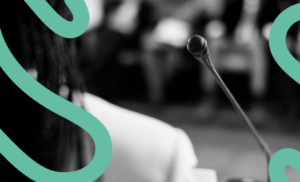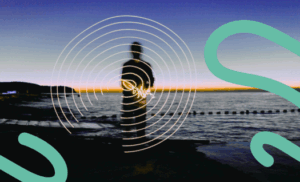It´s not easy being a streamer. Imagine going live every day, for two hours, with a community of thousands of people waiting for the moment to connect with you, listen to your broadcast and comment on it. Imagine the responsibility of surprising your audience, of living up to their expectations, of entertaining them every day with something different. Preparing all this requires organization, ideas, structure, resources… What is missing is time. And yet, hundreds of content creators on Twitch, on YouTube, on Instagram Live are going at it every day, unscripted, and passing the test. Live improvisation seems to be the key in the new entertainment scene.
The journalist Enric González, on Cadena Ser’s “A Vivir” programme, recalled that in the 1960s many young people started out in the world of radio looking for space on local radio stations to create music programmes. With no other proposal than a stack of records, they played the most outstanding songs of the moment in very personal selections that they commented on with their particular style and with no other team behind them than themselves and their criteria.
Enric compared that with the situation of thousands of people who, in recent years, have opened channels on YouTube and Twitch to generate their own content. We no longer talk about programs. We talk about channels. The technology used is different. Nor do creators depend on a company giving them space. In the digital environment, the companies that provide the support are looking forward to the arrival of new users so that they can produce more video. We´re talking about content marketing . However, the passion and goals that motivated them then and now remain the same.
In the digital environment, the companies that provide the support are looking forward to the arrival of new users so that they can produce more video
The pressure to generate digital content
When the hobby barrier is overcome to turn it into a business channel, obligations and pressure arrive. Youtubers, that is, those who can sign the platform’s partner program, know that they have an obligation to maintain a certain rhythm of video creation. Likewise, they must build, strengthen and increase a community of followers that guarantees minimum reproductions that justify the insertion of advertising by third parties.
The normal thing is that the youtuber only has himself to devise, produce and broadcast. He becomes a person-orchestra who takes care of everything necessary for the show to be guaranteed: lighting, scenery, sound, themes… The latter is the most complex. Getting new ideas to generate content has been the challenge that has taken away many channels that could not keep up with the pace. That’s why there are formats that are repeated from one channel to another as a way of facilitating creativity: reaction videos, Q&A specials, “50 things you don’t know about me“, viral challenges that pop up from time to time… The list is endless.
Towards live improvisation
But Twitch arrives, the pandemic and the exponential increase in live connections. Added to the above difficulties is the need to maintain live streams of several hours in which the content can hardly be planned. The creators of the world of esports had it easier from the beginning because the script was set by the video game itself. But what about the others? The key is in the chat.
In the reality we are living, it is the followers who guide the content. Not only is a multiple dialogue established with the users, but it is the person in charge of the channel who asks the community for their collaboration to provide ideas, links, news, thematic proposals. Each channel has generated its own group of spontaneous writers who, without being aware of it and via chat, co-create to articulate the program they attend.
On Twitch, each channel has generated its own group of spontaneous writers who, via chat, articulate the program they attend
On Twitch, Discord has become the parallel tool that enables the direction in which content evolves. Ángel Martín, for example, has different channels for distributing, ordering and receiving information. The ability of the best streamers to talk endlessly for hours on end is backed up by the collective intelligence of their followers to provide them with an endless source of creativity. On YouTube, this force comes through the channel’s comments, where the themes for the next videos are decided. Even the ability to express an opinion and to have said comments shared in public has become a privilege of those who, in addition, microfinance the creator.
The result is a transmedia storytelling ecosystem where second and third screens are once again present. Twitter is used to prevent, announce, and highlight stellar moments. Twitch to focus on live events. Discord to comment and generate community. YouTube to store the broadcasts so that they are not lost. Instagram to view snippets. Nothing is duplicated unnecessarily.
What will be the next step? It is possible that we will see a progressive association of video creators in more structured groupings, such as the new team of Ibai Llanos, which continues to mimic the configuration of esports teams. From them, content development can be done in a more organized way. Little by little, he will go from improvisation and the collective script to a professional script. We will rediscover procedures from the past and be amazed by calling them by other names.
The wheel will keep spinning so the content doesn’t stop.










